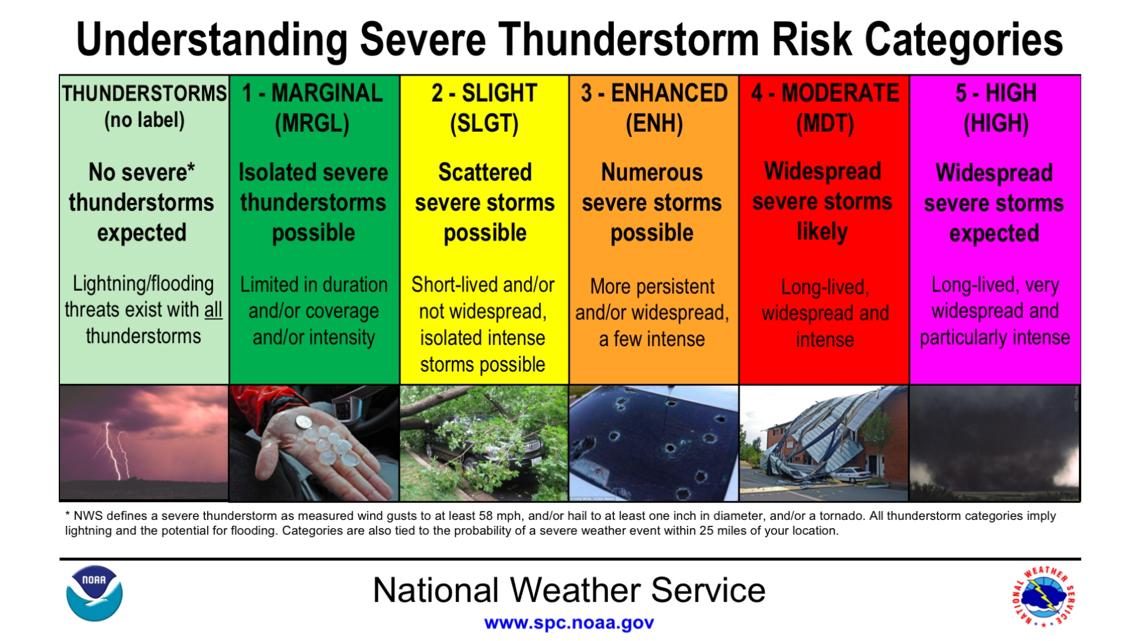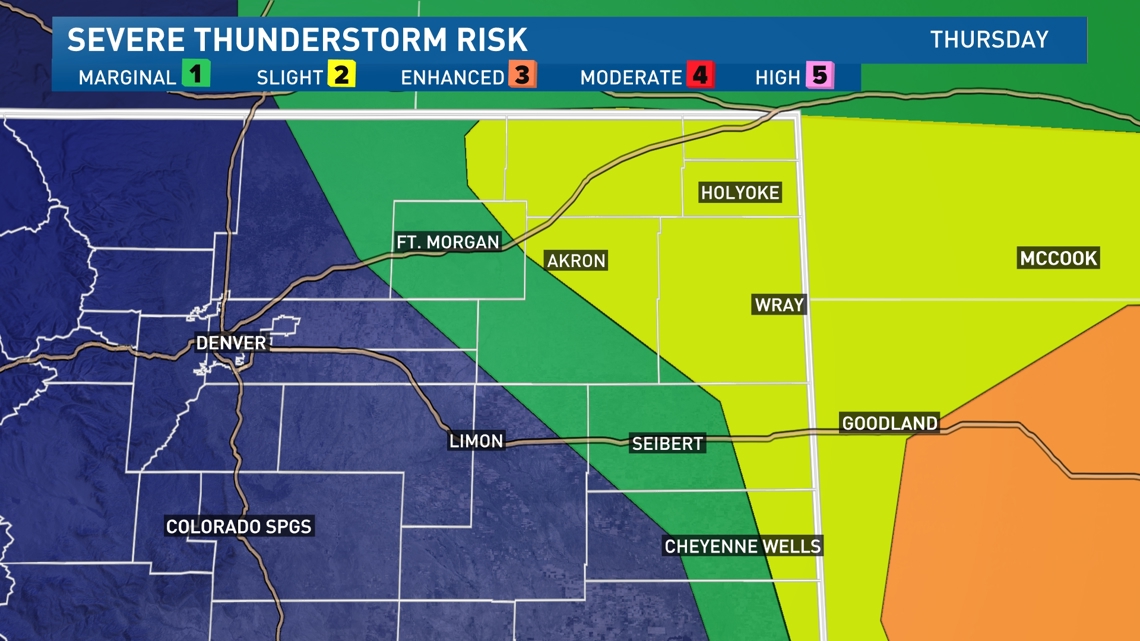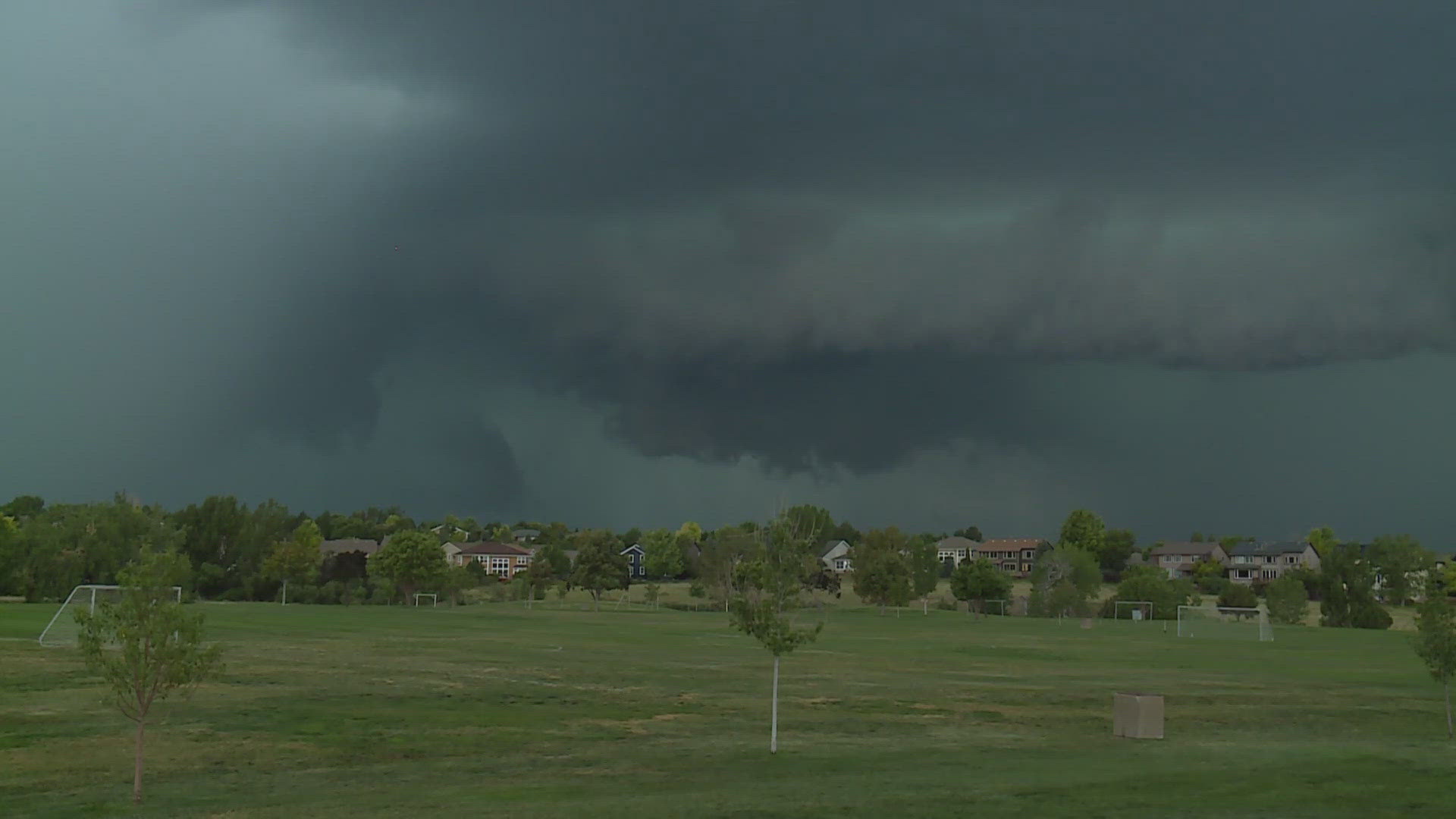DENVER — It might be a mistake to focus too much on the term "severe weather" and on top of that, the severe thunderstorm risk scale might be misleading.
As Colorado heads into severe weather season, here's what you need to know about the alerts and terms you might hear.
What is severe weather?
A thunderstorm is considered severe when it’s capable of producing hail that’s 1 inch in diameter or larger. One inch is about the size of a quarter.
Severe weather can also produce wind gusts of 58 mph or stronger or can produce a tornado.


Keep in mind that some of Denver’s most impactful storm days come from non-severe thunderstorms. Nickel- and dime-size hail, for instance, can have a huge impact, especially when there’s 6 inches to a foot of accumulation.
Heavy rain that causes street flooding is not considered severe weather, and neither is lightning.
So pay attention to all the forecast details, not just the severe weather risk.
Severe thunderstorm risk categories
That risk of severe weather gets issued on a 5-level scale put out by NOAA's Storm Prediction Center. Level 1 is the lowest risk, and Level 5 is the highest. There is also a naming system for those levels that can be misleading, especially in Colorado.
Level 1 risk is called marginal, and Level 2 is called a slight risk. The names might leave the impression that the storms will be weak, but it’s actually the coverage that’s low, with isolated or scattered severe storm cells.


To elevate to the Level 4 or 5 risk, there needs to be a widespread threat, which is usual in Colorado.
More than 95% of our state’s severe weather outbreaks come on a day with a Level 1-3 risk. Last year was one of the most active severe weather seasons in Colorado history with the most severe thunderstorm warnings and the most tornado warnings ever.
And there wasn’t a single Level 4 or 5 risk issued.
Thursday's severe thunderstorm risk
The first severe weather of 2024 for Colorado is in the forecast on Thursday. There is a marginal risk and a slight risk across the eastern plains, while there's an enhanced risk for parts of Kansas, Oklahoma and Texas.
Severe thunderstorms are likely on the Colorado side, including all the threats: large hail, damaging winds and tornadoes. The storm cells are expected to be isolated or scattered in nature.
The Denver metro area and the rest of the Front Range is not included in the risk outline, which means the thunderstorms in that area will be less likely to be severe, with small hail and wind gusts weaker than 58 mph. Storms in this area are forecast to only be isolated in coverage.


More 9NEWS stories by Cory Reppenhagen:
SUGGESTED VIDEOS: Latest from 9NEWS

